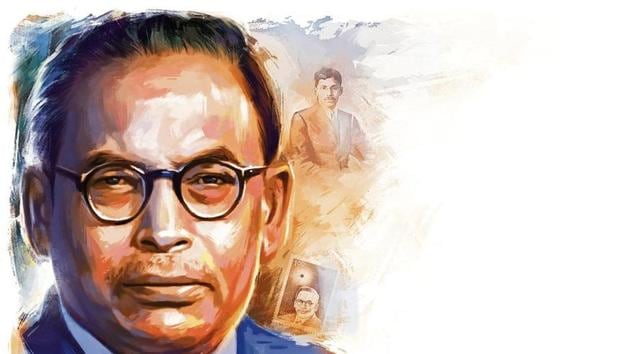Meghnad Saha: Shining star of astrophysics
This astrophysicist developed the thermal ionization equation that is vital to stellar atmosphere research. It is also one of India’s key contributions to 20th century world science.
Born on October 6, 1893 in Shaoratoli, which is a village located in the Dacca district (that corresponds to modern-day Dhaka in Bangladesh), Meghnad Saha was the fifth child born to Jagannath Saha and Bhubaneswari Devi.

Education
Despite facing dire economic difficulties, the couple educated their children. Having passed middle school, Saha enrolled at the Collegiate School in Dacca in 1905. While in school, mathematics and history were his favourite subjects.
In 1911, he cleared the intermediate examination with the third rank, while the first position went to Satyendra Nath Bose, who eventually became a great scientist. Saha joined Presidency College, Calcutta, where Bose was his classmate once again.
At Presidency, he was taught by Prafulla Chandra Ray and Jagadish Chandra Bose, both great men of science who also excelled in multiple fields. Keeping alive his quest for academic excellence, Saha completed BSc in mathematics in 1913 and, two years later, wrapped up MSc in Applied Mathematics.
Career
In 1916, Saha was appointed as lecturer in the Department of Applied Mathematics at the University College of Science, Calcutta. His former classmate, SN Bose, also joined the same university.
In 1919, he obtained the Doctor of Science degree from the Calcutta University and the coveted Premchand Roychand Studentship for a dissertation on the Harvard Classification of Stellar Spectra. The scholarship enabled Saha to travel to Europe for two years to conduct research. (Apart from Saha, many Premchand Roychand scholars who eventually became national celebrities included Sir Asutosh Mookerjee, Srimati Bibha Sengupta and Asima Mukhopadhyay.)
After a stint with renowned British astronomer Alfred Fowler in London, that lasted a few months, Saha shifted to Berlin for scientific work at the lab of Walther Nernst, who won the Nobel Award for Chemistry in 1920.
In 1923, Saha became the professor of physics at the University of Allahabad, where he remained for the next 15 years. During that period, his work in astrophysics earned recognition and, in 1925, he was made the president of the physics section of the Indian Science Congress Association.
Achievements
Saha achievements included formulation of the famous equation that he termed as an ‘equation of the reaction — isobar for ionization’, which later became known as Saha’s ‘thermo-ionization equation’ or the Saha Equation. It links the composition and appearance of the spectrum with the temperature of the light source and can be used to determine either the temperature of the star or the relative abundance of the chemical elements investigated. In 1920, he published four papers on his astrophysical research in the Philosophical Magazine. His thesis won the prestigious Griffith Prize instituted by the Calcutta University.
Saha was also actively involved non-academic pursuits. He was a strong supporter of the peaceful use of nuclear energy. In 1952, he contested and won the parliamentary election as an independent. And in 1956, it was largely thanks to his efforts that the Saka Calendar or the Indian national calendar, was adopted.
INTERESTING FACTS
1. Meghnad Saha’s work relating to the reform of Indian calendar is considered to be a very significant work. Saha was the chairman of the Calendar Reform Committee which was appointed by the Union government in 1952 under the aegis of the Council of Scientific and Industrial Research. It was formed in order to prepare an accurate calendar based on scientific study, which could also be adopted uniformly throughout India.
2. When Governor Sir Bampfylde Fuller visited the erstwhile East Bengal, Saha and a few other students boycotted the former’s visit. As a result of that, the institution forfeited Saha’s scholarship and cancelled his admission. He was then enrolled at the Kisori Lal Jubilee School, a stint during which Saha cleared the entrance test of the University of Calcutta and was the topper among the students from East Bengal.
3. Saha founded the Indian Science News Association in Calcutta in 1935 and the Institute of Nuclear Physics in 1950. He is also credited for drawing up the original plan of the Damodar Valley Project.
SOURCE: thefamouspeople.com, Wikipedia



